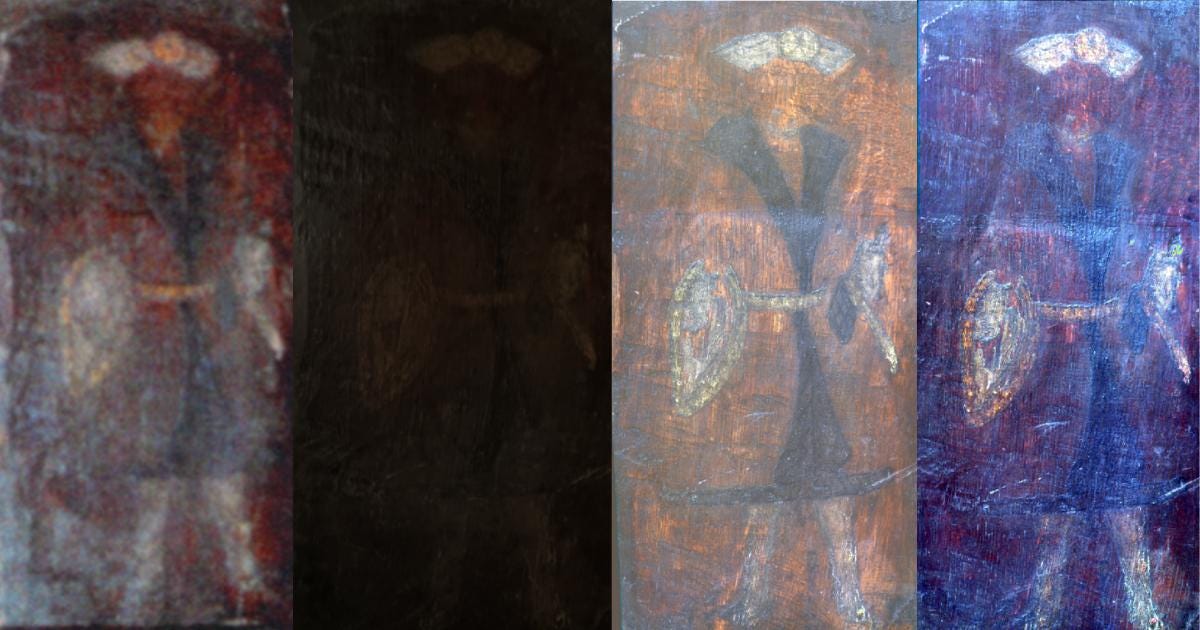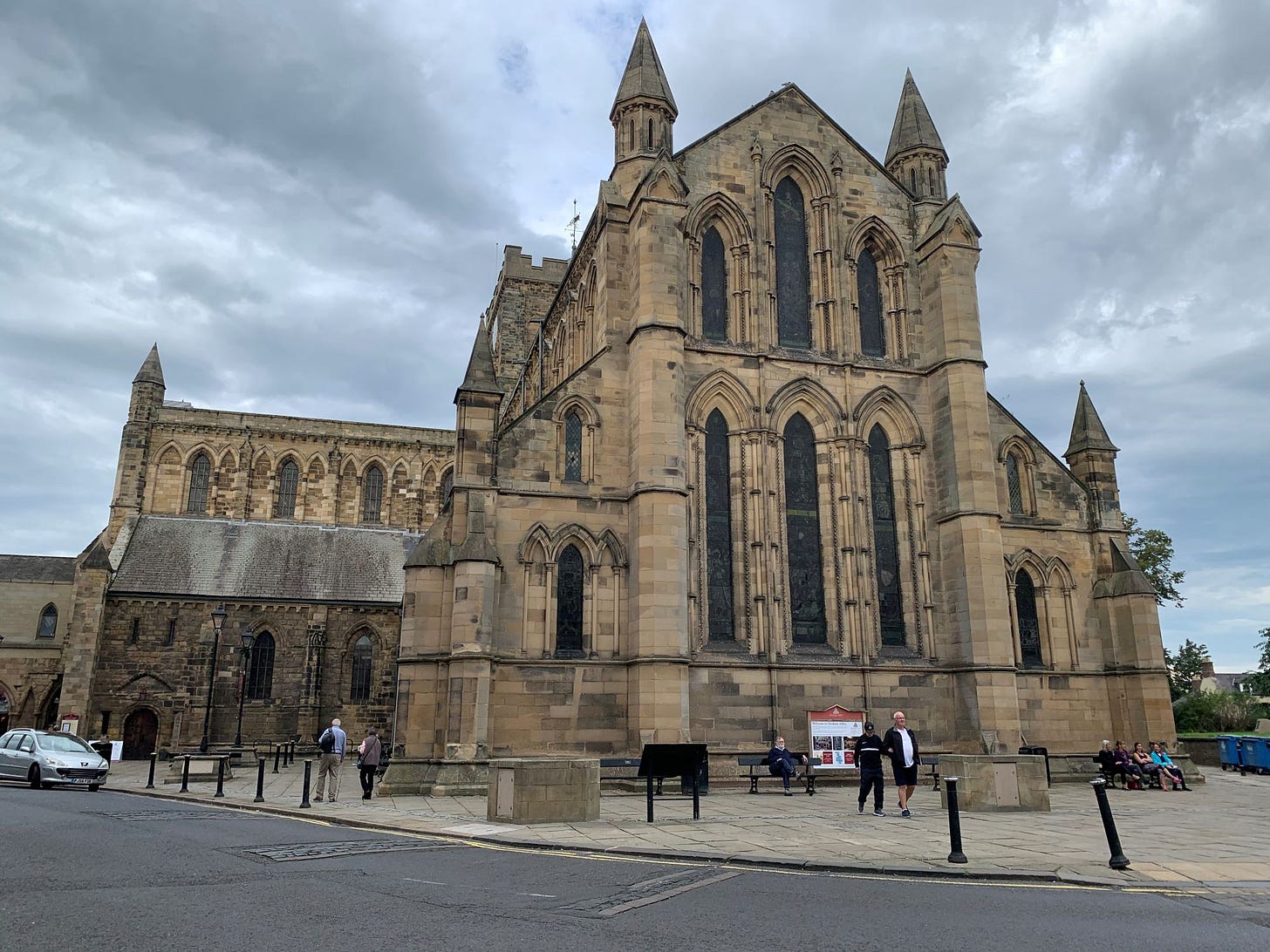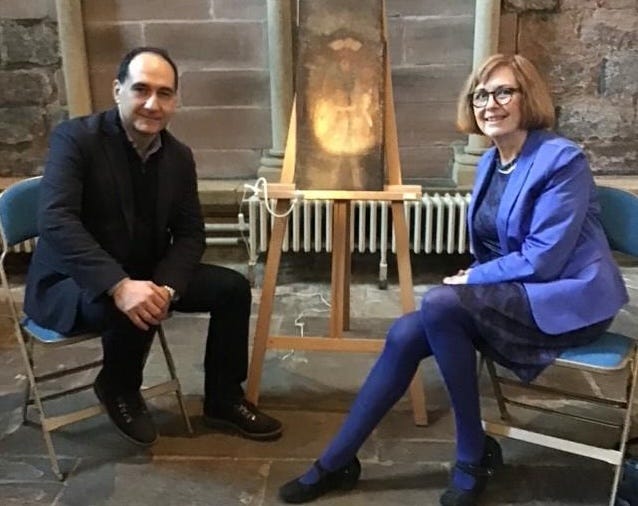Lost medieval panel found in Hexham Abbey?
Tyneside scientist in 'Dance of Death' discovery in Northumberland. Tony Henderson reports
High tech work by a heritage scientist may have tracked down the missing image in a Northumberland series of medieval paintings.
A wooden panel, found in Hexham Abbey, could be the missing part of a run of panel paintings called the Dance of Death.
Four surviving paintings dating to around 1500, illustrate Death visiting powerful figures, including a cardinal, a king, an emperor, and the Pope.
The possible existence of a fifth painting in the series had been discussed for hundreds of years.
Hexham Abbey's panels are considered some of the most important surviving examples of medieval English panel painting, a genre that was particularly vulnerable to destruction during periods of religious reform, such as the Protestant Reformation in the 16th century.
For centuries, scholars and art historians had speculated about the existence of a fifth panel, thought to depict the ‘introducer or caller’ introducing the sequence, following a 1790s sketch by antiquarian John Carter.

Then in 2017 a wooden panel, which had not been seen since the 1990s, was discovered in Hexham Abbey’s triforium – an area of the Abbey rarely visited due to its inaccessibility.
The panel was in a poor condition, with the surface heavily discoloured, and so the Hexham Abbey Conservation Group enlisted the expertise of Dr Charis Theodorakopoulos, a heritage scientist at Northumbria University.
He carried out a non-invasive examination of the panel, with a camera developed by spectral imaging specialists XpectralTEK.
Using a wide range of wavelength bands from across the electromagnetic spectrum, XpeCAM imaging solution is designed to capture different layers of an artwork, from surface varnishes, through the various paint layers to the underdrawings beneath, confirming which materials have been used to produce the colours.
By merging images of the panel taken at three wavelength bands representing red, green and blue light, Dr Theodorakopoulos was able to identify the image hidden beneath decades of grime – that of a figure in Tudor dress, thought to be the ‘caller’ featured on the introductory panel in the Dance of Death series.
In addition, the XpeCAM camera was also able to provide insight into the layers of medieval pigments hidden beneath centuries of discoloured varnish. By comparing these spectra with established pigment databases, Dr Theodorakopoulos was able to identify the panel's original colours and strengthen the theory that it is connected to the other panels in the Dance of Death series.
The study also involved statistical analysis to simulate the removal of discoloured varnish, enabling the team to virtually restore the painting's vibrant colours.
Dr Theodorakopoulos said: “The discovery of this panel that may belong to the Dance of Death series of paintings is a monumental achievement for Hexham Abbey and for art conservation.
“This is not only a rediscovery of an important piece of art history, but it also demonstrates the potential of modern technology in unlocking the secrets of our cultural heritage."
Dr Tom Kelsey of Hexham Abbey said: “The technical skills that Dr Theodorakopoulos and Northumbria University brought to our investigations cannot be underestimated. Melding together the spectral analysis and the history of the Abbey’ s mediaeval art collection has proved so helpful – and will be of enduring interest to many academics and interested observers.”
The research was carried out in partnership with Hexham Abbey Conservation Group and will now feature as a case study in a an online talk by Dr Theodorakopoulos and XpectralTEK,on April 30 at 3pm.




This was a super read, thank you Hannah. I had never heard of these panels. I looked the panels up after reading your article. They are really amazing. Next time I am up that way I am going to call in the abbey.